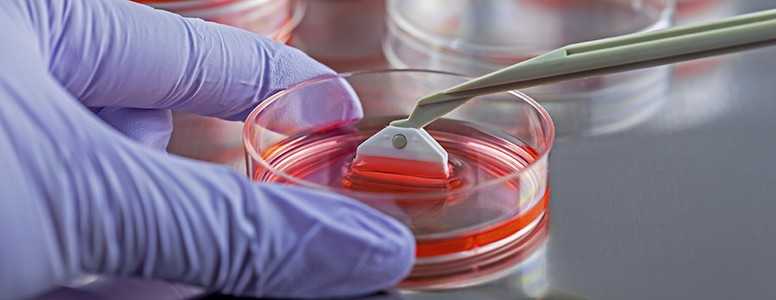Unique stem cells from the pancreas could have the potential to regenerate beta cells, new findings suggest.
US scientists report that progenitor cells, which can differentiate into other types of cell, can be stimulated to develop into glucose-responsive beta cells.
This means that progenitor cells could be used for regenerative cell therapies in people with type 1 diabetes, prospectively helping to restore insulin production.
Scientists from the Diabetes Research Institute Foundation at the University of Miami Miller School of Medicine expanded on findings that a protein called BMP-7 stimulates progenitor-like cells within pancreatic tissue.
They demonstrated that the cells are characterised by the expression of a protein called PDX1, which is necessary for beta cell development, and a cell surface receptor called ALK3 which is associated with tissue regeneration.
Upon extraction of the cells that expressed PDX1 and ALK3, they grew them in a dish and discovered they proliferated upon exposure to BMP-7. Eventually they differentiated into beta cells.
“The ability to offer regenerative medicine strategies to restore insulin production in the native pancreas could one day replace the need for transplantation of the pancreas or insulin-producing cells,” said Camillo Ricordi, M.D., director of the Diabetes Research Institute.
Co-study lead Juan Dominguez-Bendala, Ph.D. added: “Our in-depth study of these pancreatic stem cells may help us tap into an endogenous cell supply ‘bank’ for beta cell regeneration purposes and, in the future, lead to therapeutic applications for people living with type 1 diabetes.”
Whilst regeneration of insulin producing islets may be possible, the autoimmune attack of type 1 diabetes would still be present. Therefore, as current research stands, immunosuppressive drugs would be required to prevent the immune system from destroying the newly regenerated cells.
The researchers also believe the findings could have applications for type 2 diabetes by helping to ease the strain on beta cells.
The findings have been published online in the journal Cell Reports.
What's new on the forum? ⭐️
Get our free newsletters
Stay up to date with the latest news, research and breakthroughs.







